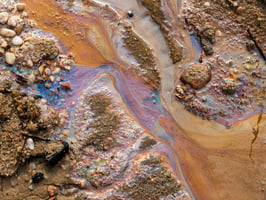Lubricants are used in many critical industries to ensure machinery runs as needed; however, many...
What Are Environmentally Acceptable Lubricants and Why Are They Important?
There are many pieces of industrial equipment used in several industries that require the use of lubricants and hydraulic fluid to operate efficiently. Unfortunately, a wide array of these lubricants and fluids are extremely harmful to the environment. Many of these lubricants are used in hydropower applications or on large ocean vessels that travel over bodies of water. In these applications, many types of fluids are released into the water, including lubricants and hydraulic fluids.
Luckily, there is a solution on the market that is becoming more and more popular. Environmentally Acceptable Lubricants, or EALs, address these environmental concerns and still allow industrial equipment to function properly. As more and more state, local, and federal restrictions come into play, the awareness of these environmental risks is growing, leading to increased interest in EALs. With the sustainable lubricant industry growing, it is important to understand what EALs are and why they are important.
So, What are Environmentally Acceptable Lubricants?
Environmentally Acceptable Lubricants are lubricants that meet specific standards for biodegradation, toxicity, and bioaccumulation, and minimize the negative consequences in aquatic environments. EALs also need to prove they meet these standards through testing. There are a few different types of EALs, each with its own benefits and applications. Some lubricants have not yet met these standards, but are expected to—these are called Environmentally Friendly Lubricants, or EFLs.
The Importance of Environmentally Acceptable Lubricants
Since traditional lubricants cause severe damage to the environment and aquatic ecosystems, alternatives are needed. Environmentally Acceptable Lubricants are a great solution to eliminating these harmful environmental impacts and protecting aquatic wildlife. Additionally, many of these EALs do not require the use of nonrenewable resources, adding to their sustainability.
Types of Environmentally Acceptable Lubricants
EALs are created from a base oil, which must be biodegradable in order for the final lubricant to be biodegradable, since it is often a large part of the formulation. There are three common base oils used in EALs, all of which can meet biodegradability and eco-conscious requirements.
Bio-Based or Vegetable Oils
These oils are derived from natural sources, such as vegetable or plant oils, and are minimally modified. The most common oils used vary from place to place, with grapeseed oil being the most popular outside of the United States and canola, soybean, and sunflower oils being the most commonly used inside the United States.
There are a few advantages to using bio-based or vegetable oils for EALs, including their biodegradability, low toxicity, performance benefits over mineral oils, and the fact that they do not readily thin at high temperatures.
Synthetic Esters
Synthetic esters are formulated via chemical synthesis of bio-based materials such as animal fat or vegetable oils. Due to the process they are created through, EALs made from synthetic esters can be tailored to their specific intended applications. Synthetic esters are more common and have many more performance benefits than other oils.
On top of their performance benefits, synthetic esters perform well at various temperatures, have a high viscosity index, provide corrosion protection, and meet biodegradability and toxicity requirements.
Polyalkylene Glycols
Polyalkylene glycols are synthetic lubricants made from petroleum-based materials. Despite being made from petroleum, these EALs are still highly biodegradable and water-soluble.
EALs made from polyalkylene glycols have the best low- and high-temperature viscosity out of these options and provide corrosion protection while also meeting biodegradability requirements.
The Challenges of Environmentally Acceptable Lubricants
While Environmentally Acceptable Lubricants are a great eco-friendly option, there are limitations and challenges associated with them.
- Many fully developed, cost-effective EALs are still being researched, meaning there may need to be improvements for optimal performance in their specific applications.
- Production of these EALs can be costly and very difficult to complete because of restrictions on products needed to create the lubricants.
- EALs that are newly formulated must compete with established petroleum products on the market that are likely less expensive.
- Existing industrial equipment was designed to use petroleum and mineral oil lubricants, meaning any EALs created need to be compatible with these machines.
EALs are great for the environment and many governments and industries are making the switch to using more sustainable products, however, there is still a large market shift that needs to occur.
Want to Learn More? Aropha is Here to Help
At Aropha, we are dedicated to providing high-quality biodegradability testing for many industries, including the lubricant industry. We have numerous tests that can be used to determine if your lubricant meets the biodegradation requirements to qualify as an EAL.
In addition to our biodegradability testing, we offer biodegradation predictions using our machine learning program, ArophaAI. This program takes the known chemical structure of your product and accurately predicts its biodegradability without the need for any lab testing.
If you are interested in learning more about EALs and their requirements, download our free guide here. Or, if you are interested in our biodegradability testing or ArophaAI, contact our team today.



